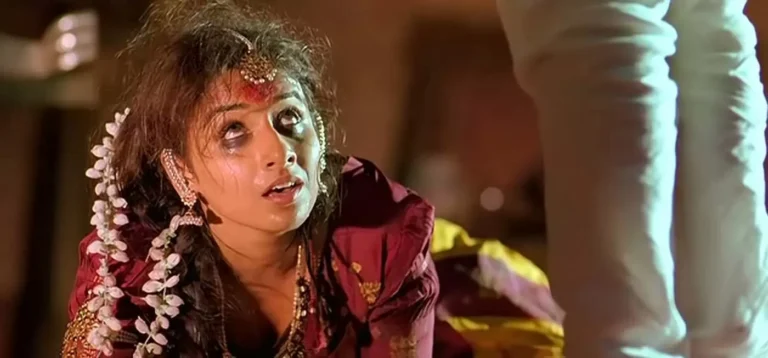
Why Indians celebrating Halloween?
Table of Contents
ToggleThe answer to why Indians celebrate Halloween actually lies in some important concepts of social psychology. But before that, let’s look into the concept of festival celebration. Two important aspects are necessary to consider when understanding why we celebrate any festival at all and why the majority do so.
The main component and reason lie in just 'celebration' unfortunately rather than purpose and religious devotion. Therefore, the amount of fun and socialization involved is the primary motivation for the majority, and enjoyment or celebration is a kind of thing that actually transcends cultural and language differences. For example, people who don't know Punjabi still celebrate the songs without understanding a word. This is an example of how celebration and enjoyment have a human element beyond religious, cultural, and traditional understanding.
Even if you look closely, subregions in India also celebrate each other's festivals despite different cultures. For instance, the idol of Ganesha is traditionally kept in the region of Maharashtra, and as part of the ritual, idol immersion takes place in the sea as Maharashtra is a coastal location which is less ecologically harmful and more practical than immersing a 10-foot idol in a river.
People in North India have recently adopted this exact ritual, but they immerse their idols in rivers, leading to blockages and hindering the flow of water. Later, in response to the increasing celebrations among the subregion of north India especially the exercise of this particular ritual of visarjan (idol immersion) in the northern regions, many city governments have implemented guidelines regarding the materials used in idol manufacturing.
The adoption of this ritual again has a celebratory component that motivates people to participate, even though traditional puja on Ganesh Chaturthi was sufficient. It's not just about the festival we adopt food as well; like putting paneer on pizza, what is it? It is similar to celebrating Halloween in India. This is another example of cultural adoption. Unless religious beliefs are a hindrance, individuals tend to embrace whatever celebratory aspects of any festival are possible. Now, the question arises, why don't Western countries celebrate our festivals? To understand this, we need to grasp two major concepts of social psychology, which are as follows:
What is Cultural Diffusion?
Cultural diffusion is the spread of cultural elements, such as beliefs, practices, customs, fashion trends, technologies, music, language, and more. For instance, there’s a high chance you're wearing Western clothes in India right now instead of traditional clothing, that's an example of cultural diffusion. Conversely, when you visit rural areas of India, like in the state of Haryana, you'll find that women still adhere to their traditional cultural dressing sense answer is simple cultural diffusion is hard to reach in rural areas due to a lack of exposure therefore even celebration of Halloween is high in urban areas of India than sub urban.
Halloween, with its roots in Western culture, has gained popularity in India. The reason behind this lies in India's extensive exposure to Western traditions, facilitated through media, web series, movies, television, and the internet. The imagery associated with Halloween, including costumes and pumpkins, has been widely disseminated. Additionally, the celebratory element of Halloween is easy to adopt without many restrictions, be they religious or environmental. Consequently, Halloween is often celebrated, particularly in urban and suburban areas of India.
What is Cultural Assimilation?
Assimilation is a systematic and intense phenomenon. In cultural assimilation, an individual or group from one culture adopts the customs, norms, and values of another culture to the extent that they become integrated and absorbed into that culture, often without being fully aware of the roots and reasons behind the festivals of the other culture. This process frequently involves a minority culture being absorbed into a dominating culture. Domination, in this context, doesn't necessarily refer to population size but can encompass prevalence in global media and the exposure of the minority to the culture of the majority.
Indians have been assimilating Western culture due to cultural diffusion, media globalization, and exposure. However, Western cultures aren't assimilating Eastern cultures in the same way, primarily because of limited exposure and the diversity of Eastern cultures. For example, while Diwali and Holi have gained recognition in other countries, festivals like Vijaya Dashami, Bhai Dooj, or Navratri are relatively unknown outside of India
Conclusion
These concepts highlight the dynamic and ever-changing nature of cultures, as they are shaped by historical interactions, migrations, trade, and globalization. It is crucial to recognize the complexity and significance of both cultural diffusion and assimilation in understanding how societies evolve, how diverse cultures coexist, and how individuals navigate their identities in an interconnected world.
Individuals and societies must recognize the significance of cultural heritage and the purpose of festivals as more than just celebratory events. These aspects of our cultural identity are invaluable and serve as the foundation of our collective history, values, and traditions. By taking care of our cultural heritage, we not only preserve our roots but also ensure that future generations have the opportunity to learn from and appreciate the rich tapestry of human culture.

Pingback: What is Xenophobia and Xenophobia vs racism. - Supra Consciousness